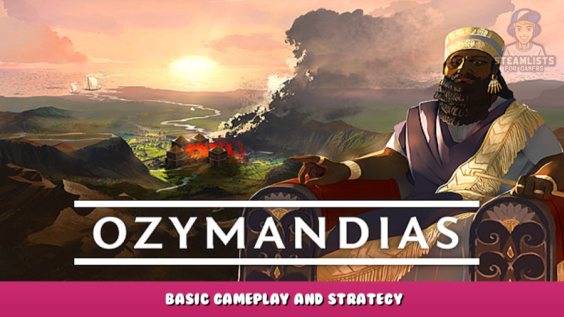
This guide will briefly describe the basics of the strategy game Ozymandias.
Introduction
This guide was written during the playtest. I have only tested singleplayer on the Near East and Greece maps.
The guide is still in development. We will continue to add pictures.
For more information, please refer to the in-game guide.
Start a new game
After pressing "Singleplayer", you will be taken to the next screen.
This menu allows users to select maps by clicking on the arrows. The symbols for the different civilizations are displayed at the bottom of this stone. A marker will be placed on the bottom of the stone if you have won. This will indicate the date of your win with the hardest difficulty.
After pressing "Play", you will be taken to the map screen. You can now choose your empire.
Civilization
Each empire is unique. When choosing an empire, there are three things you should consider
-
Location:
Think about your neighbors and the type of their enemies. Expansionists and militant empires may launch dangerous attacks sooner than other civilizations. It is also important to consider the terrain. You should have a lot of the same terrain as this will make technologies more useful. -
Trait:
Each empire has its own trait. This determines your starting resources as well as a few advantages and disadvantages. This information should be taken into consideration when you play. (The information will still be available in-game). -
Difficulty:
You have the option to give yourself or the AI an advantage through boosting wealth income. A difficulty estimate is also provided.
Victory conditions
The victory condition menu opens by pressing the Crown in the upper left corner.
You can see the required victory points to win (at maximum 10 – and the amount of victory point awarded by each wonder (0-4 -).
The fulfillment requirement can also be adjusted by changing the amount of victory points that are awarded. You can "lock" individual wonders, and re-roll the rest as needed. To make the lock symbols) appear, you must reroll once.
You can remove all wonders, except the Great Lighthouse, to make a dominance-only game. It will award you 4 victory points. This means that you must control every tile on your map in order to win.
Interface
We will now go over the game interface.
Traits
Each empire's banner is located on the left side. These banners are sorted according to victory progress.
If you hover over a civilization banner it will display its trait type and its territory. Clicking on the banner will reveal its trait details.
Victory progress
A crown is displayed above the banners. Clicking it will reveal your victory progression.
If the menu is open, you can hover over other civilizations to see their progress towards victory.
Eraser and Hourglass
The eraser resets your turn.
Your turn is over when the hourglass closes.
There's nothing more.
Settings
The settings menu will be opened by clicking the cogwheel at the top left. This will also display shortcuts.
One notable shortcut is "T", which indicates the types of terrain.

You can see the resources of your empire on the right
They are listed in the following order: Knowledge, Wealth Food, Power
By hovering over the banners of your opponents, you can see their resources.
Food

This resource can be used for four purposes: Claiming Tiles (Building Cities), Growing Cities and Moving Units (Moving Units). Except for Moving Units, all actions can be accessed by pressing on the Food tab to your left.
Claiming Tiles
Planting a flag can be used to claim any neutral tile along your border.
The cost of a flag is determined by the terrain.
Distance to nearest city will add +1 to the cost of each tile.
Flag technologies and adjacent tiles all subtract 1 from the cost.
All flags are evaluated at the end of each turn. If only one flag is visible on the tile, they are awarded the tile.
If more than one empire has claimed the tile, power and adjacent tiles will be considered. If one empire has more power than the other, they will get the tile. If there is a tie, the number adjacent friendly tiles will be taken into consideration. If there is still a tie, the number of adjacent friendly tiles are considered.
Building Cities
Two rules apply to building cities: they cannot be built next to another city and they cannot be built near enemy territory.
The cost of a city will depend on how many cities you have and what terrain it is located in. River and Grassland cities are less expensive than Mountain and Desert ones.
The cost of claiming tiles will depend on where you live, so it is best to place them outside your empire's walls, not in the interior.
Cities start at a size of 2.
Growing Cities
The cost of growing cities depends on their size and terrain. The cost growth is linear. However, the maximum city size can be reached at 8. The city's size is shown visually.
The yield of a city grows as it gets larger, so it makes economic sense to grow the smallest city. This may not be true because cities have the ability to project power in neutral and friendly tiles, depending on their size. This is covered in the Passive Power section.
Moving Units
Clicking on a unit will allow you to move it from friendly territory to another tile. Each tile traversed has a associated food cost, depending on its terrain and type. It is more expensive to move armies on land and sea than it is to move them on islands and the ocean.
Knowledge

The knowledge tab opens a menu that gives an overview of all technologies. It also displays your total tile/city yield at the bottom.
There are three types of technology:
Flag Technologies
Each terrain type has three levels. Each technology reduces the cost of claiming tiles by 1 (. The cost cannot be lower than 1 –
Terrain Yields
Each type of terrain yields knowledge, wealth, and food. Technology can increase the amount of each tile in a particular terrain type. You can quickly determine the yield of a particular terrain type by counting how many technologies are available in each category.
Terrain Power
These technologies increase your power on every tile of the given terrain. You can increase the power technology for each type of terrain a arbitrary amount of times, but each level will cost more.
Additionally, every time you unlock a new power technology, all other power technologies will increase in price.
Wealth
(UNDER CONSTRUCTION))
Spending
You can specify how much of your current wealth you want to use to buy resources for the next turn.
-
Food:
Fixed cost of 2 wealth = 1 food -
Science:
Fixed cost of 1 science = 1 wealth -
Power:
Base cost is 4+x. x is the number of units. It is incremental.
Example 1:
One unit is required. The base cost is 5. 3 power costs
5 + 10 + 15 = 30.
Example 2:
There are three units. The base cost is therefore 7. 4 power costs
7 + 14 + 21 + 28 = 70.
Waste
Power
Power refers to the game's handling of war. Empires have the power to conquer tiles of enemy empires and claim tiles.
Each tile is assessed separately to determine an empire's power.
Let's take a look at the power tab. It does not open a menu but activates a variety of overlays.
1. If another empire has power there, you can see your power in each tile as (a heatmap or pie chart)
2. To see the power level of each empire in that tile, hover over it.
3. To see the power of another empire, hover over the banner to the left
4. To see power contributions from your techs, hover over the Knowledge tab
5. To view power contributions from military units, hover over the Wealth tab
6. To see power contributions from your city, hover over the Food tab
7. To see your total power in each tile, hover over the Power tab
This guide will help you distinguish between passive and active power.
Passive Power
This type of power does not depend on your power resource. This is dependent on the technology, cities, and terrain. This only applies to friendly and neutral tiles, unless a friendly unit is nearby. If you don't have any adjacent units, you will always have zero power in enemy territory.
Terrain
There are nine types of terrain.
Island, River, Grassland, Plain, Mountain, Forest, Desert, Sea, City.
You have no inherent power in these tiles at first. Power technologies can change this, increasing your power in any tile that has that particular terrain type.
Unlock power technologies to attack or defend an area.
Defensive bonus
Only friendly territory is eligible for defensive bonuses.
Hills get +2 Power in defensive bonus.
For their defense bonus, Islands and Forests receive +1 Power
This gives the tile owner free power, making it easier for them to defend.
Cities
Cities exert their influence on tiles nearby in proportion to their size. This power is applicable in neutral and friendly territory.
The following is the effect of a city of 4:
The city tile receives +4 Power
In adjacent tiles you get +3 Power.
In tiles 2 away you get +2 Power.
In tiles 3 away you get +1 Power.
And so on.
This means that the city size is best at the front line because it helps protect your territory. This is more risky, as you could lose your investment.
Active Power
Military units project active power, which is how you attack the enemy. If your passive power is not sufficient, it may be necessary to defend your borders.
Armies/Navies
Your empire power is projected onto military units, as well as adjacent tiles. They cost food to move.
Both types of units can be kept in cities.
Threaten -> Attack
It takes two turns to conquer spaces.
The power distribution in each border tile at the end of each turn is evaluated. If the owner's power exceeds that of another empire and an enemy unit is adjacent, one of two things will occur.
1: A tile that is "normal" will be considered "threatened". An overlay will be placed that matches the color of the aggressor.
2: If the tile has been "threatened", it can be sold to the hostile empire that has the most power in the tile and the adjacent units.
The conqueror does not necessarily have to be the one who threatens the tile.
Killing units
Although units are not meant to fight each other, it is possible to lose or kill units.
After tiles are transferred, any unit that is not adjacent or on the same side as a friendly tile is destroyed.
Strategy
Here are a few tips from my head. (Although I don't know much about the multiplayer meta, they should still be useful). These tips can sometimes conflict with each other. Balance them.
Optimize your resources
The short version: Reduce resource waste
Long version: To rule an empire, you must manage your resources.
Because a portion of your stored resources will go to waste at the end your turn if they are not used, saving up is generally not a good strategy. (power is an exception because the stored amount IS its purpose. The amount that is wasted quickly approaches the yield of the resource, especially in the early games.
As a rule, you should spend all of your resources. This brings us to economy tab, where wealth is spent. In the beginning, knowledge and food were the most important resources. Therefore, wealth is not necessary unless you are looking to buy a military unit.
Tiles are relatively inexpensive so it is easy to keep a stash of food that has been used. However, technology is expensive so it's easy to waste a lot of money. Plan the technologies you want and allocate wealth to make it possible to afford them. Don't allocate wealth if you don't plan to unlock the next turn.
Cut off competition
The short version: Greed is good.
Long version: Expand aggressively to secure large areas for future expansion. This means expanding towards and securing prime locations before the competition. The flag discount will make it very easy to build a city in a region with many unclaimed tiles.
Avoid conflict
The short version is that greed is not so good.
Long version: Do not claim tiles that can be challenged by other empires. The result is that you have wasted food if the other claimant wins the tile. It will be a disaster for you both if you don't get the tile. However, the other empires will continue to grow unassisted. If you really want the tiles, unlock power technology and/or think about whether the other empire might claim them.
Opportunities
Every turn offers two options. These opportunities are key to your success.
You can access them by pressing the crown on the left.
There are three types.
Claim
This condition has no cost. It could be free resources, or a flag. To claim your reward, click the "Claim" button once you have decided to use it.
It is a good idea if you have three opportunities to claim them all to make way for the next batch.
Condition
This is the most frequent opportunity. You will receive the reward if you meet the conditions.
Pay
Some opportunities in the late game ask you to pay resources (and disband a unit, which will give you a reward. These are similar to "Claim" opportunities and can be completed by pressing "Pay (" or "Disband), depending on whether you have the resources.
Hope you enjoy the Guide about Ozymandias – Basic Gameplay and Strategy, if you think we should add extra information or forget something, please let us know via comment below, and we will do our best to fix or update as soon as possible!
- All Ozymandias Posts List


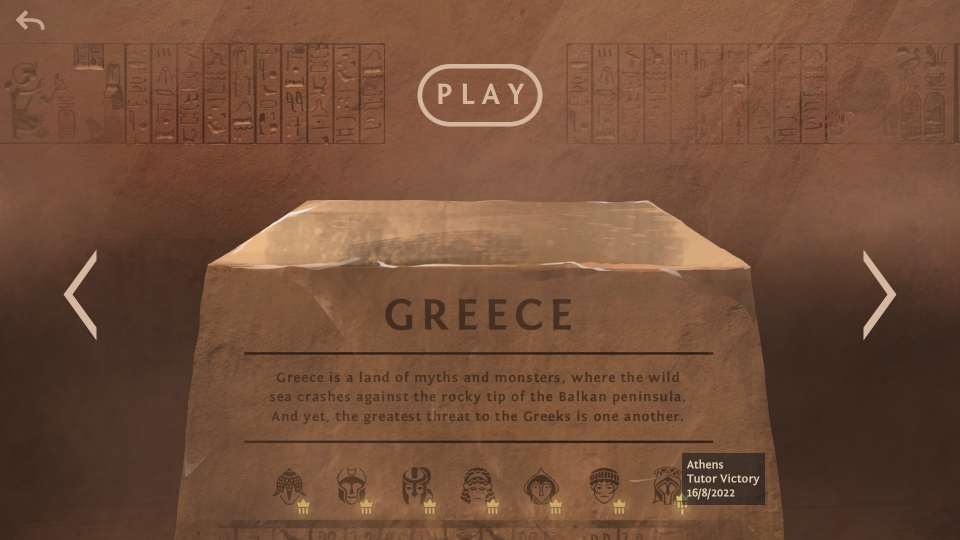
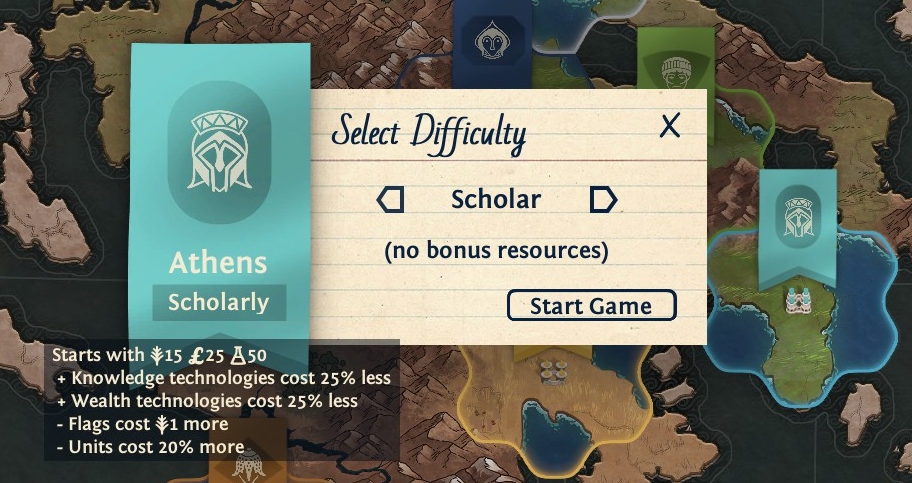
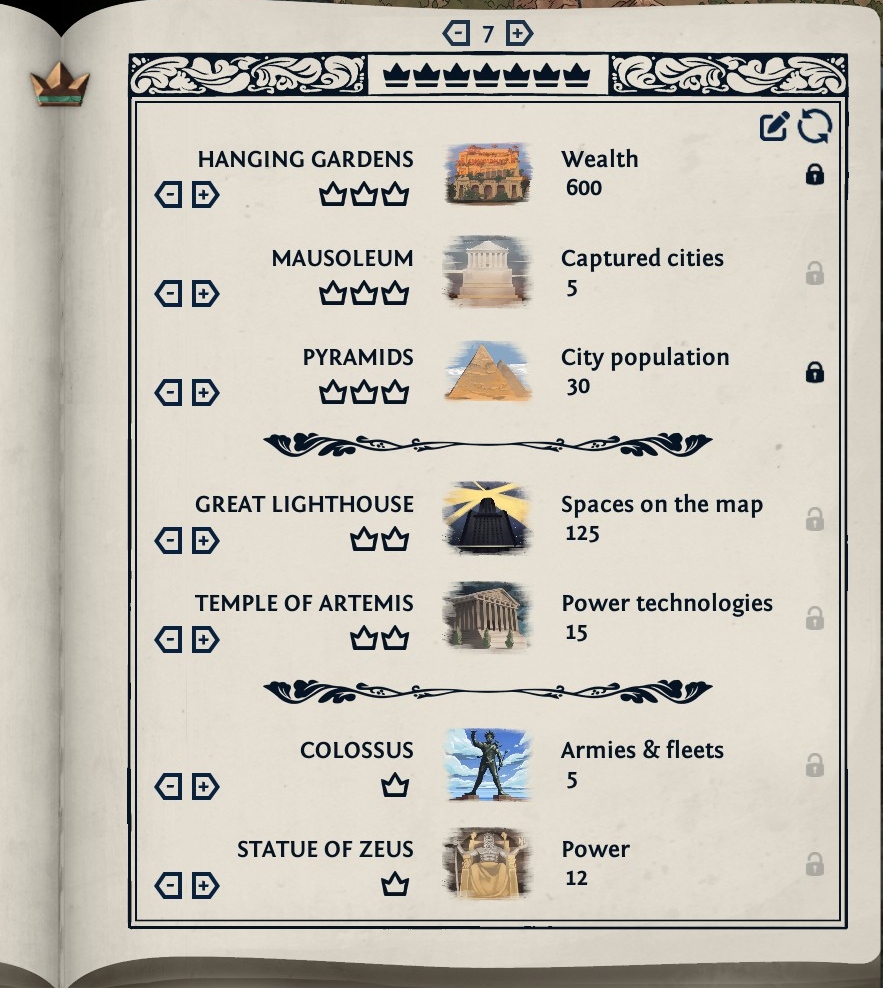
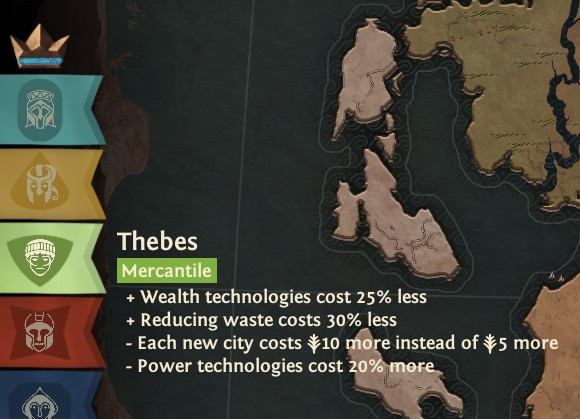
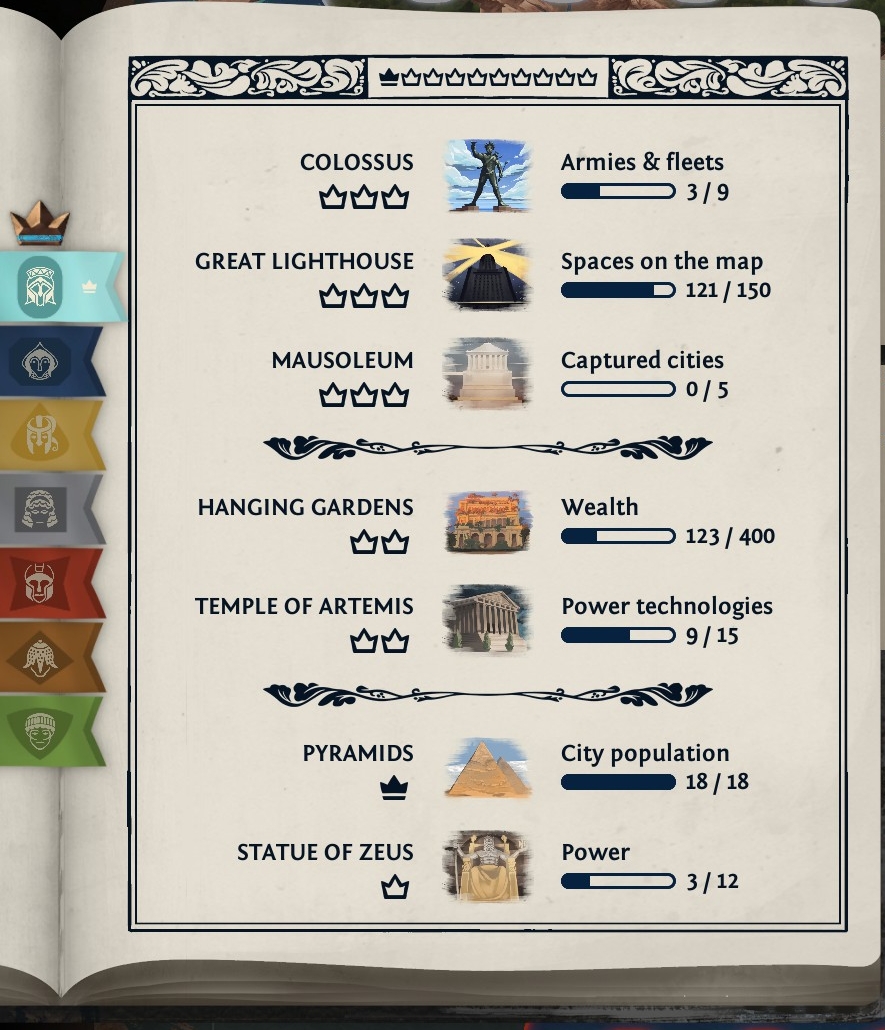

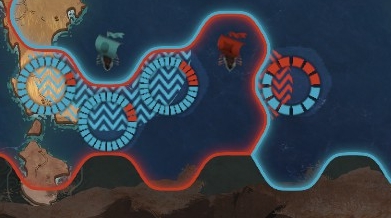
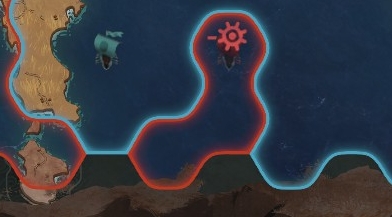
Leave a Reply